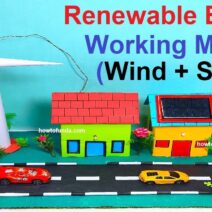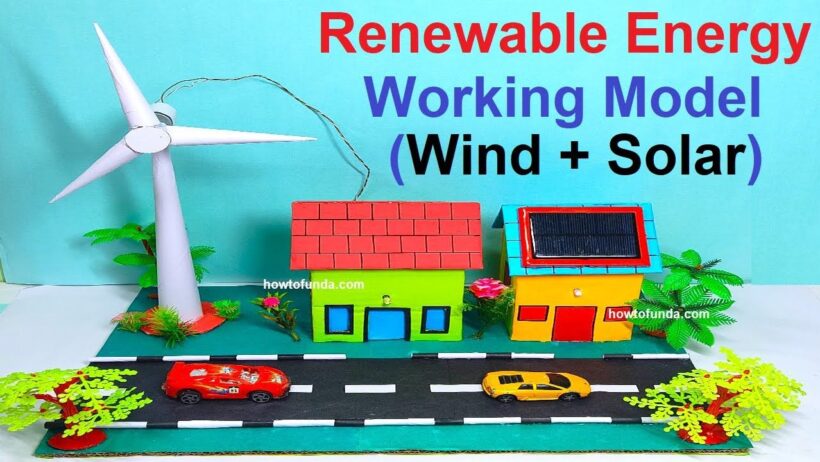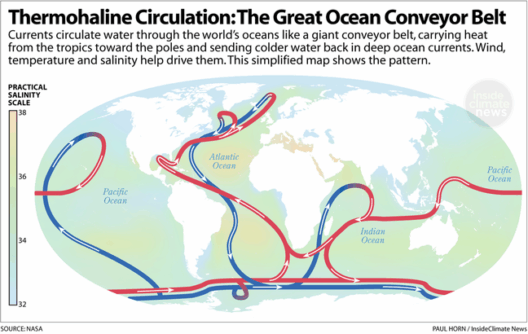Energy conservation is a pivotal aspect of sustainable living and a key consideration in combating climate change. Understanding how to make a model of energy conservation can empower individuals to take informed actions in their daily lives. Here, we explore a collection of easy DIY ideas that demonstrate principles of energy conservation while being engaging and educational.
To commence, one can craft a simple solar oven. This project illustrates the concept of harnessing solar power. Materials needed include a pizza box, aluminum foil, plastic wrap, and black construction paper. First, cut an opening in the top of the pizza box and line it with aluminum foil to reflect sunlight. Next, place black construction paper inside the box to absorb heat. Cover the opening with plastic wrap to create an insulating layer, and voila! You have a solar oven. This model vividly demonstrates how sunlight can be utilized for cooking, emphasizing the significance of solar energy in reducing reliance on fossil fuels.
Another fascinating project is the creation of a wind turbine model. This experiment requires materials like a small motor, plastic bottle, or cardboard, and some lightweight blades made from paper or plastic. The goal is to show how wind energy can be converted into electricity. To build, attach the blades to the motor and position the turbine in a location where it can catch the wind. As the blades spin, they generate electricity that can power a small LED light. This model serves to highlight the potential of wind energy as a sustainable energy source, illustrating the practicality and scalability of renewable energy technologies.
Next, consider constructing a hydropower generator. This project exemplifies energy conservation through the transformation of kinetic energy into electrical energy. For this model, you will need a small water wheel, a container for water, and a small generator or motor. By allowing water to flow over the wheel, the mechanical energy generated can be transformed into electricity. Students and DIY enthusiasts alike can visualize how dam infrastructure works and how hydropower provides a substantial portion of energy used worldwide, showcasing the importance of this renewable resource.
Additionally, building a thermoelectric generator can be a compelling project. This device converts heat energy into electrical energy using thermoelectric materials. Gather a copper plate, a Peltier module, and a heat source (such as a candle or a hot plate). By placing one side of the Peltier module on a heat source and the other side against a heat sink, electric current can be generated. This simple experiment illuminates the broader concept of thermoelectricity and emphasizes the potential for alternative, sustainable energy sources found in everyday thermal applications.
The energy-efficient house model serves as an excellent project for illustrating energy conservation in architecture. Use materials like cardboard, plastic bottles, or foam board to create a miniature house. Incorporate design features such as solar panels (using painted CDs), strategic window placements for natural light, and insulation made from recycled materials. This model emphasizes the concept of passive solar building design. It illustrates that careful planning in residential construction can dramatically reduce energy consumption and enhance sustainability.
On a broader scale, creating an embodied energy model enables exploration of the lifecycle energy consumption of various materials. Collect samples of different materials commonly used in construction (wood, steel, concrete). Use an online calculator to determine each material’s embodied energy, which is the total energy required for its extraction, production, and transportation. Construct a visual chart or graph to represent this data. By understanding embodied energy, individuals can make more informed choices about the materials they use in their projects, ultimately leading to more sustainable construction practices.
Incorporating a battery-powered model car can vividly demonstrate energy conservation principles in transportation. This model can be constructed using a small electric motor, wheels, and a chassis made from recycled materials. Use rechargeable batteries to power the car, illustrating how sustainable energy can be harnessed. This project showcases the transition toward eco-friendly transportation options and the potential for reducing emissions through electric vehicles.
Moreover, a rainwater harvesting system model can help illustrate the importance of water conservation in energy terms. By demonstrating how rainwater can be collected and stored using simple materials like plastic containers or barrels, individuals can visualize the connection between water conservation and energy savings. Water treatment, transportation, and heating utilize significant energy resources, making rainwater harvesting an effective avenue for conserving energy.
Finally, consider creating a model demonstrating the concept of smart grids. This project involves constructing a miniature grid system that incorporates renewable energy sources, such as solar panels and wind turbines combined with traditional power sources and energy storage solutions. By simulating how energy flows within this grid, participants can gain insight into the future of energy distribution and the interconnectedness of various energy sources.
In summary, constructing models of energy conservation is not only a fascinating endeavor but also a vital educational exercise. Through various DIY projects—from solar ovens to smart grids—individuals can actively engage with the concepts of renewable energy and sustainable practices. These models foster a deeper understanding of energy dynamics, encouraging informed choices that align with a shared commitment to environmental stewardship and the health of our planet.






